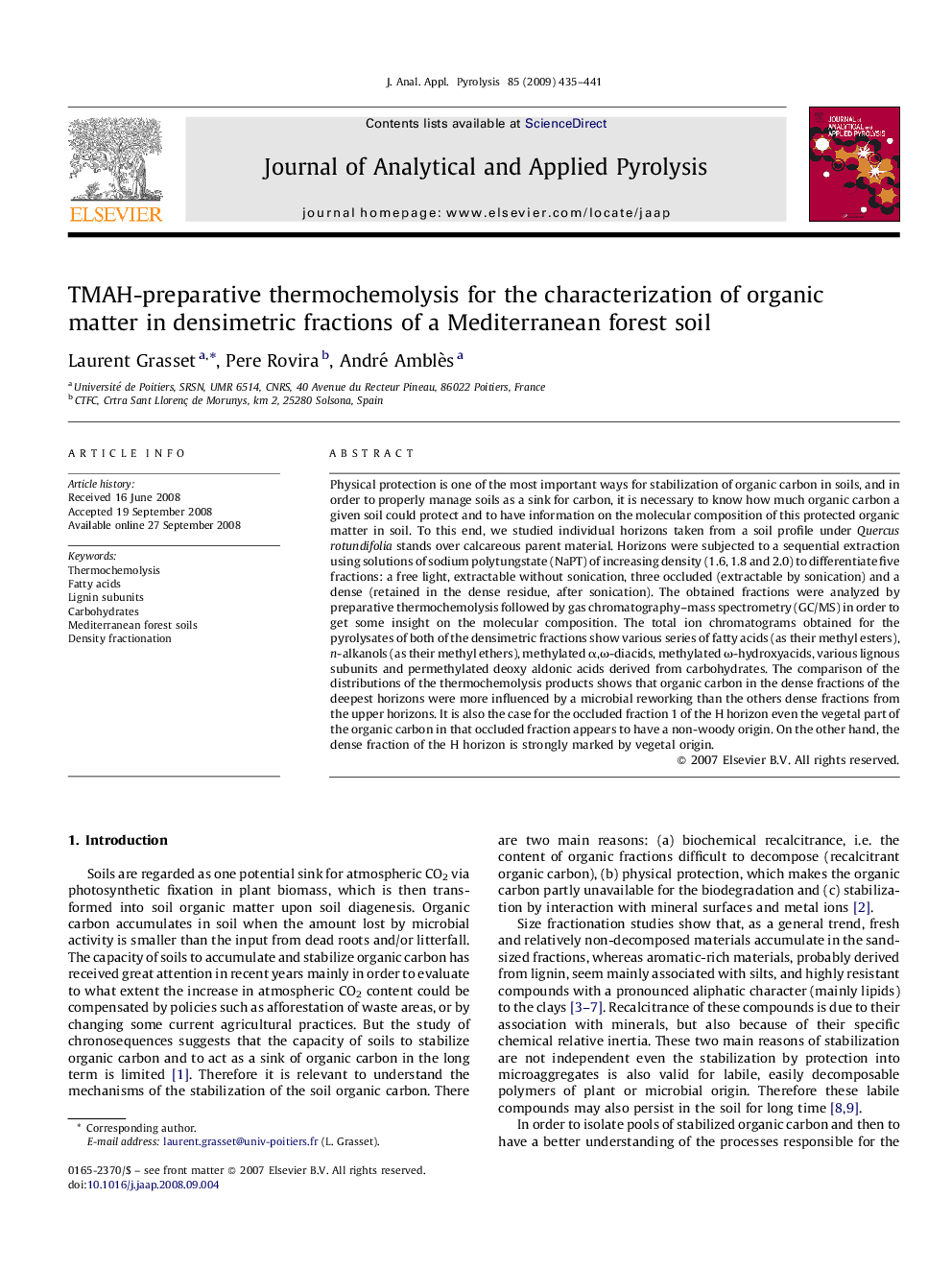| Article ID | Journal | Published Year | Pages | File Type |
|---|---|---|---|---|
| 1197544 | Journal of Analytical and Applied Pyrolysis | 2009 | 7 Pages |
Physical protection is one of the most important ways for stabilization of organic carbon in soils, and in order to properly manage soils as a sink for carbon, it is necessary to know how much organic carbon a given soil could protect and to have information on the molecular composition of this protected organic matter in soil. To this end, we studied individual horizons taken from a soil profile under Quercus rotundifolia stands over calcareous parent material. Horizons were subjected to a sequential extraction using solutions of sodium polytungstate (NaPT) of increasing density (1.6, 1.8 and 2.0) to differentiate five fractions: a free light, extractable without sonication, three occluded (extractable by sonication) and a dense (retained in the dense residue, after sonication). The obtained fractions were analyzed by preparative thermochemolysis followed by gas chromatography–mass spectrometry (GC/MS) in order to get some insight on the molecular composition. The total ion chromatograms obtained for the pyrolysates of both of the densimetric fractions show various series of fatty acids (as their methyl esters), n-alkanols (as their methyl ethers), methylated α,ω-diacids, methylated ω-hydroxyacids, various lignous subunits and permethylated deoxy aldonic acids derived from carbohydrates. The comparison of the distributions of the thermochemolysis products shows that organic carbon in the dense fractions of the deepest horizons were more influenced by a microbial reworking than the others dense fractions from the upper horizons. It is also the case for the occluded fraction 1 of the H horizon even the vegetal part of the organic carbon in that occluded fraction appears to have a non-woody origin. On the other hand, the dense fraction of the H horizon is strongly marked by vegetal origin.
